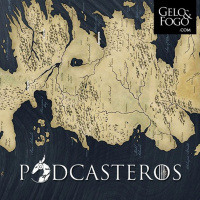Synopsis
These are the audio lectures to supplement the textbook 'Python for Everybody: Exploring Information' and its associated web site www.py4e.com. There is also a video podcast of this material.
Episodes
-
8.3 Strings and Lists
30/09/2016 Duration: 08minWe learn how to parse strings pull sub-strings out of a string using the split() function.
-
9.1 Python Dictionaries
30/09/2016 Duration: 08minWe compare and contrast how Python lists and dictionaries are structured internally. How we use position to index lists and use keys to index dictionaries.
-
9.2 Building Histograms
30/09/2016 Duration: 09minWe look at how we can use dictionaries to count the frequencies of many things at the same time. We learn how the key and value are related in a dictionary and example the get method to retrieve values from a Python dictionary.
-
9.3 Counting Words in Text
30/09/2016 Duration: 11minIn this segment we bring everything together, reading a file, parsing the lines, and computing the frequencies of the words in the file. This is an important moment that pulls from everything we have learned so far.
-
10.1 Understanding Tuples
30/09/2016 Duration: 09minWe look at the basic syntax and capabilities of Python tuples. We explore the concept of immutability, and we compare tuples to lists and strings.
-
10.2 Sorting Data
30/09/2016 Duration: 12minWe look at how we sort lists, dictionaries, and lists of tuples in Python.
-
Worked Example: Sorting Dictionaries
30/09/2016 Duration: 10minWorked Example: Sorting Dictionaries
-
11.1 Introduction to Regular Expressions
30/09/2016 Duration: 10minWe look at the syntax of regular expressions and how to use them to search through text data.
-
11.2 Matching and Extracting Data
29/09/2016 Duration: 08minIn this segment we learn to pull out data from strings after a regular expression has found a match.
-
11.3 String Parsing with Regular Expressions
29/09/2016 Duration: 08minWe look at how some of the string parsing we have done in earlier chapters can be easily done with regular expressions.
-
12.1 Network Technology (TCP/IP)
29/09/2016 Duration: 07minWe take a very brief look at how software communicates across the Internet using TCP/IP.
-
12.2 Hypertext Transport Protocol (HTTP)
29/09/2016 Duration: 09minIn this section we look at the HTTP protocol that is used to move documents between web servers and web browsers.
-
12.3 Building a Web Browser in Python
29/09/2016 Duration: 04minWe write a simple Python program that connects to a web server and retrieves a web document. It is a very simple web browser.
-
12.4 Unicode Characters and Strings
29/09/2016 Duration: 11minWe explore how characters are encoded when they are transported across the network.
-
12.5 Retrieving Web Pages
29/09/2016 Duration: 05minWe write an even simpler Python program to retrieve a web page using the urllib library in Python.
-
12.6 Parsing Web Pages
29/09/2016 Duration: 06minNow we will look at the HypertextMarkup Language (HTML) that we retrieved using Python and extract links from that HTML. We are slowly building a very simple web search engine.
-
13.1 Data on the Web
29/09/2016 Duration: 02minWe look at two different ways to format data for transmission across the network including JavaScript Object Notation (JSON) and eXtended Markup Language (XML).
-
13.2 eXtensible Markup Language (XML)
29/09/2016 Duration: 05minWe look at how data is represented using the XML format.
-
13.3 XML Schema
29/09/2016 Duration: 14minWe look at how we can use XML Schema to determine whether or not a particular bit of XML is valid.
-
13.4 JavaScript Object Notation
29/09/2016 Duration: 06minWe learn about the popular JSON data format and how to handle the JSON data in Python.












